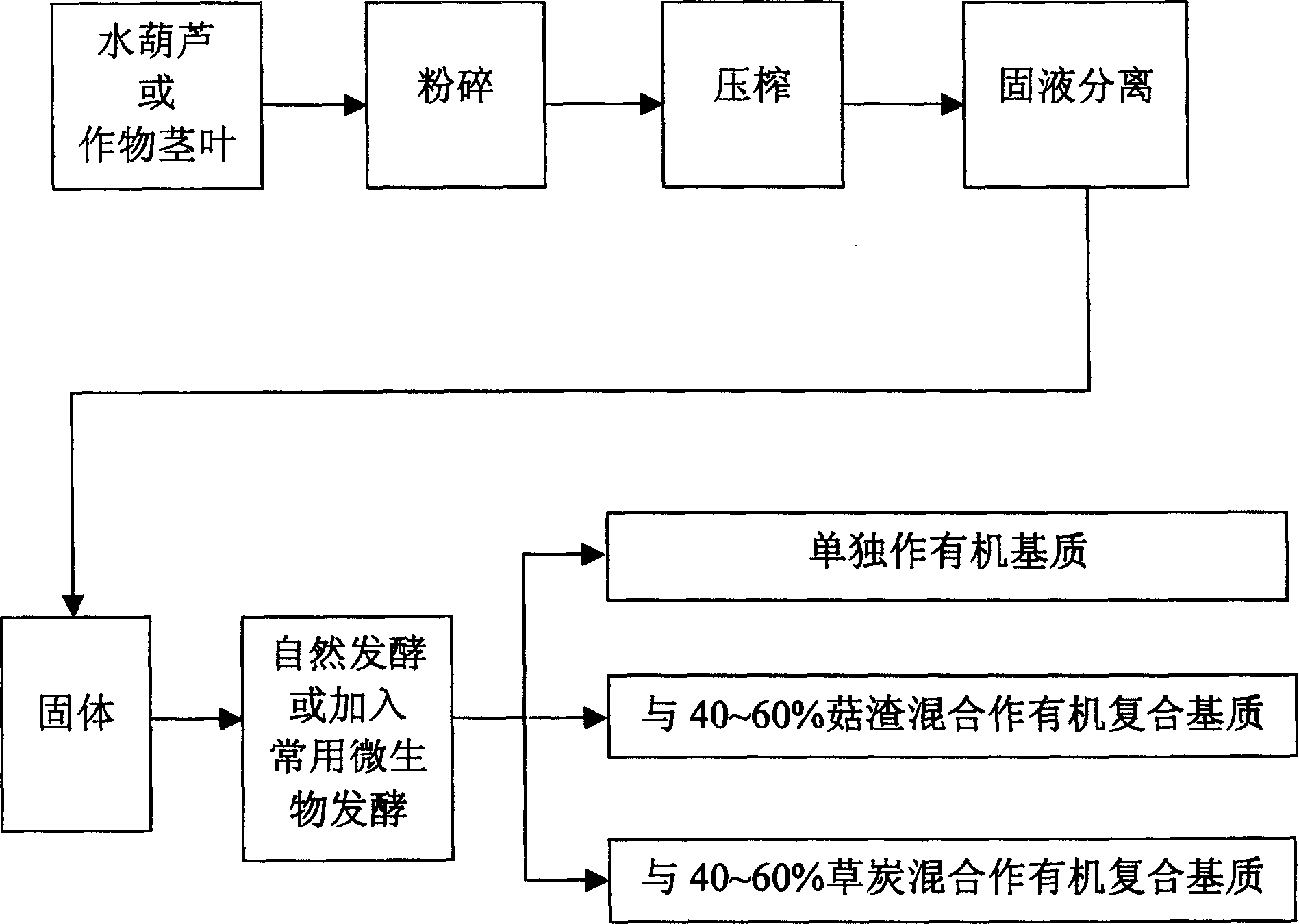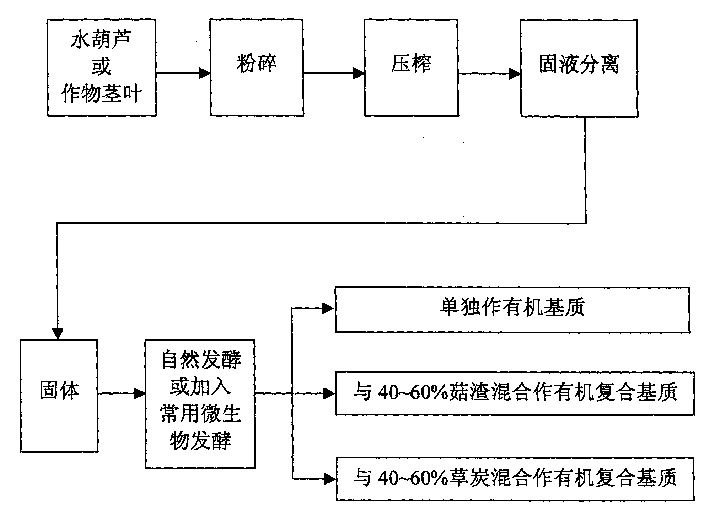Technique for producing organic matrix from hyacinth, stem and leaf of crop
A technology of organic substrate and production process, applied in the field of organic fertilizer and soilless cultivation, can solve the problems of affecting the growth of underwater organisms, reducing the light penetration ability, increasing the concentration of carbon dioxide, etc., and achieves low price, high production efficiency, and fertilizer retention ability. strong effect
- Summary
- Abstract
- Description
- Claims
- Application Information
AI Technical Summary
Problems solved by technology
Method used
Image
Examples
Embodiment 1
[0021] Production of organic substrates using water hyacinth.
[0022] According to the above method: the freshly salvaged water hyacinth is pulverized by a pulverizer, squeezed by a juicer, separated from solid and liquid by a filter, and fermented with solid slag to obtain an organic substrate.
[0023] The produced organic substrate was used for soilless cultivation of eggplant, and the control substrate was 100% perlite. The yields were as follows: 3,149 kg of cucumbers grown on organic substrates and 2,950 kg of cucumbers grown on perlite, an increase of 6.7%.
Embodiment 2
[0025] Production of organic substrates from tomato leaves.
[0026] According to the above method: crush the freshly crushed tomato leaves through a pulverizer, squeeze with a juicer, separate the solid and liquid with a filter, and ferment the solid residue to obtain an organic substrate, and then mix the substrate with the fermented mushroom residue at a ratio of 1:1 The volume ratio is mixed to obtain an organic composite matrix.
[0027] The produced organic composite matrix was used for soilless cultivation of eggplant, and the control matrix was 100% perlite. The yields were as follows: 3,415 kg of cucumbers grown on organic substrates and 2,950 kg of cucumbers grown on perlite, an increase of 15.8%.
PUM
 Login to View More
Login to View More Abstract
Description
Claims
Application Information
 Login to View More
Login to View More - R&D
- Intellectual Property
- Life Sciences
- Materials
- Tech Scout
- Unparalleled Data Quality
- Higher Quality Content
- 60% Fewer Hallucinations
Browse by: Latest US Patents, China's latest patents, Technical Efficacy Thesaurus, Application Domain, Technology Topic, Popular Technical Reports.
© 2025 PatSnap. All rights reserved.Legal|Privacy policy|Modern Slavery Act Transparency Statement|Sitemap|About US| Contact US: help@patsnap.com


